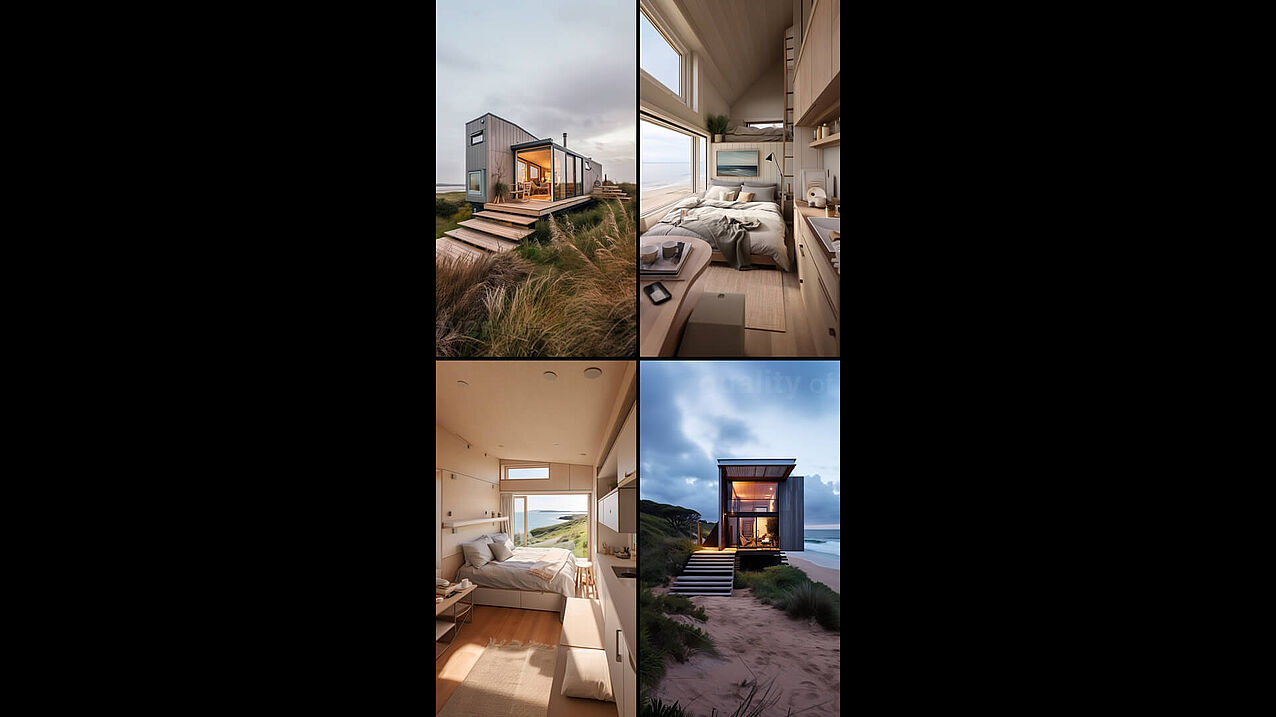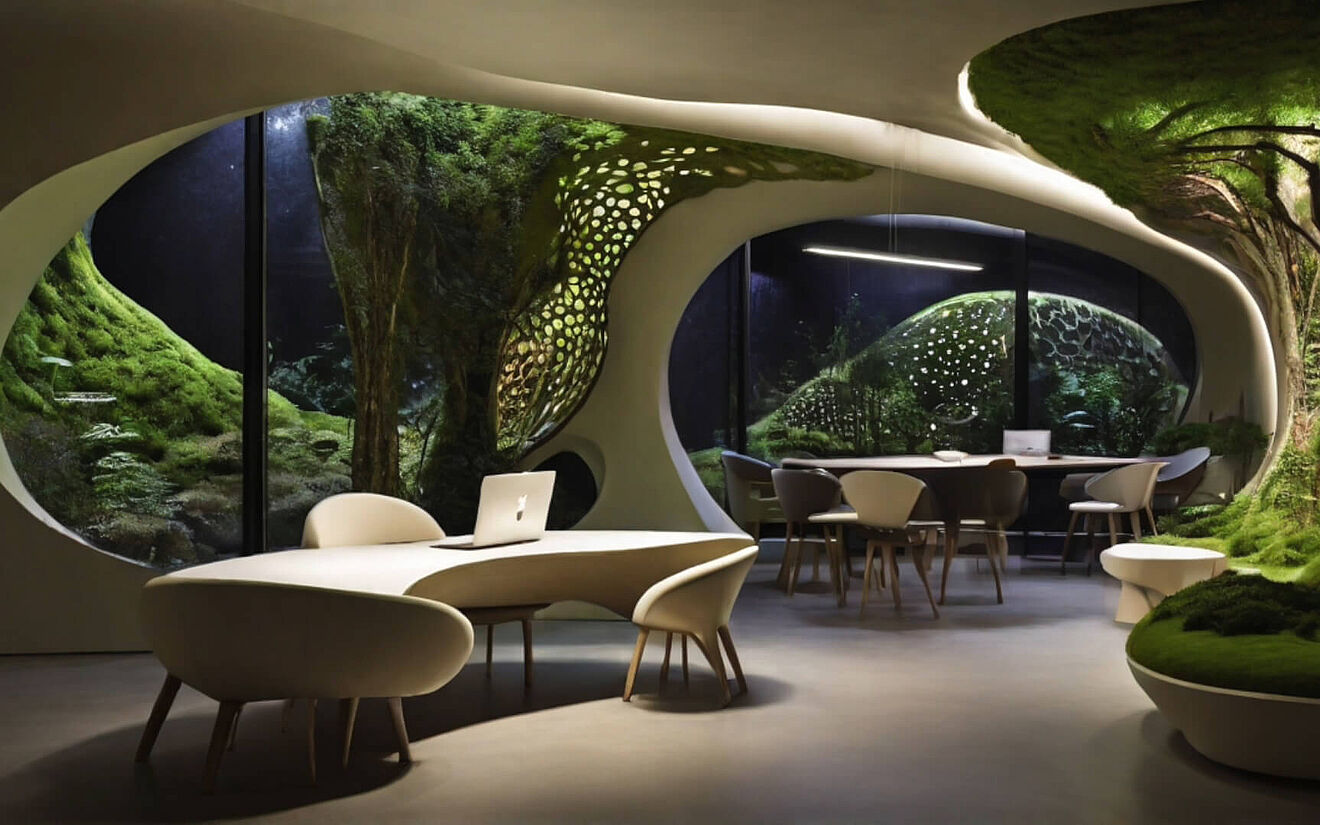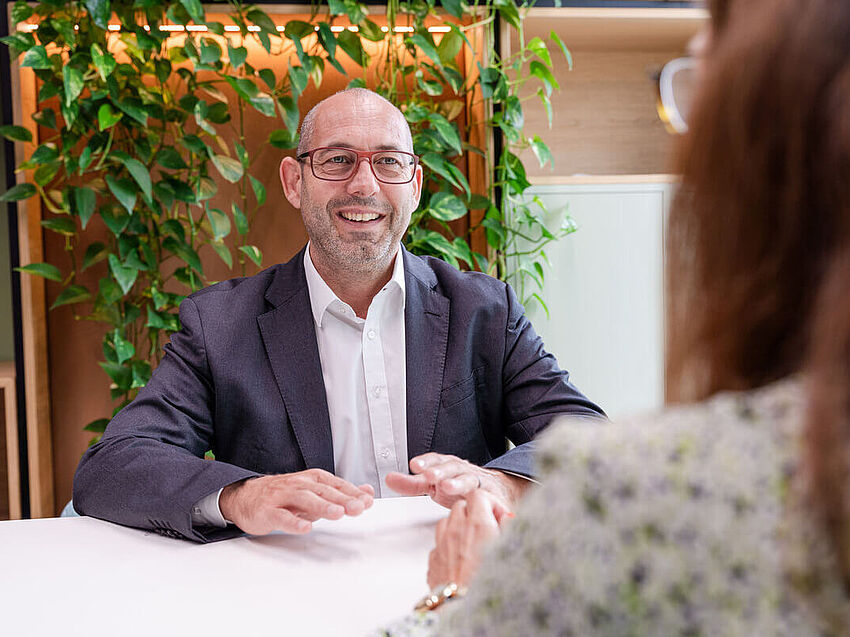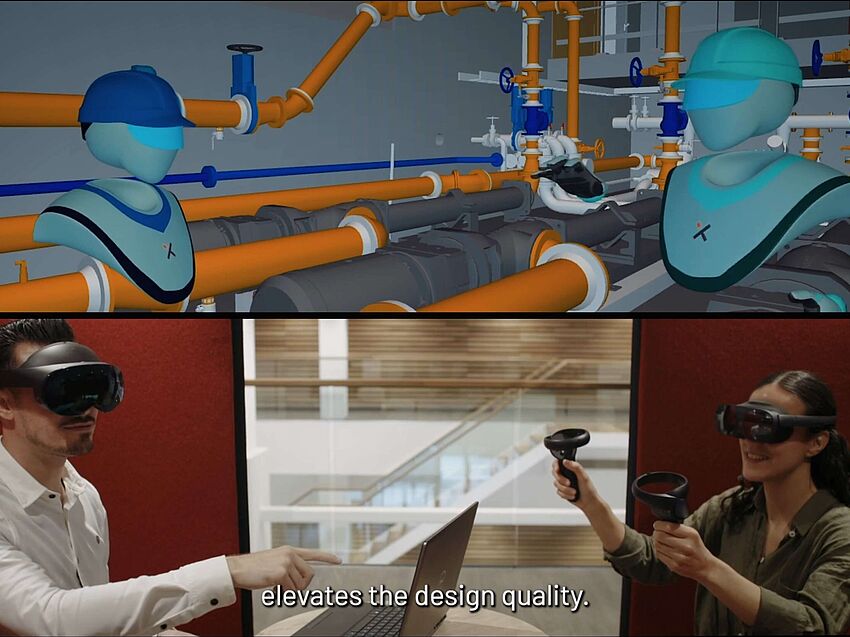How is AI changing architecture? Experiences from education clearly show that it fuels the creativity of architects in the idea generation process. And this is just the beginning.
Given the rapid development in the field of artificial intelligence, it requires little imagination to see that this technology will profoundly change our world. By now, there is practically no area where AI does not play a significant role (or will soon play one). This is especially true in architecture. For Prof. Michael Holze from BHT Berlin, the AI-driven transformation is already tangible. In his computer-aided architectural representation course, his students are already designing like the architects of tomorrow using AI. He recently showcased the astonishing results at an ALLPLAN virtual conference on AI in architecture.

AI: The ultimate tool for idea generation
For Michael Holze, working with platforms like Dall-e, Midjourney, Stable Diffusion, or PromeAI is nothing short of groundbreaking, even if such AI models are currently only used at the very beginning of a project for idea generation. “The most difficult innovation for many people to grasp is that machines have ideas and generate designs!”, emphasizes the architect. These intelligent tools allow for incredibly fast and visually stunning idea generation at a low cost. What once required many hours of work now can now be created in exceptional detail within seconds, thanks to AI.
This new way of designing with images is not limited to individual views. With the right prompts, facades, detailed sections, and even interior architecture – down to individual pieces of furniture – can be generated. Last but not least, countless variations can be playfully explored and revised until the desired result is found. Other AI tools, such as Photoshop Beta, allow for precise post-processing (e.g., through tools like Generative Fill). The goal is to maintain as much control as possible when using AI. According to Michael Holze, it is possible to achieve the desired result with almost absolute precision.

“The technology is only as good as the person using it,” says Michael Holze. “You always have the choice to take the easy route – or, to take your own ideas forward, go through the desired design process, and achieve the design you want. One should never be satisfied with the first result, but rather push the AI in the direction one wants. I always view the development of working with AI in terms of what comes out of it against the backdrop of architectural art.”
“Architecturalization” through AI
In addition to pure prompting, there is also the possibility of “architecturalizing” physical objects or sketchy drawings using AI. With AI platforms like LookX AI or Stable Diffusion, for example, a detailed visualization can be created from a photo of a roughly built model or a simple sketch. In this way, a finished, high-quality rendering can be produced easily, which can serve further architectural discussions. Simple CAD drawings or parametric studies can also be directly transformed into a rendering and used for urban planning studies.

Is AI creative in architecture?
The enormous benefit of artificial intelligence in architecture is already evident in the education sector. To technically implement what AI enables students to do more or less immediately, they would normally need at least an entire additional semester. Michael Holze also sees a major benefit in the fact that AI fuels the most crucial factor of all – the students’ passion. Struggling students can become better through AI, while strong ones can excel.
But is working with AI really creative? According to Michael Holze, the creativity of architects is both inspired and accelerated by artificial intelligence. AI can be a tool for making one’s architectural vision take shape as efficiently and realistically as possible. The iterative path to this is often associated with much diligence and perseverance. However, the ultimate goal of architectural education with AI is to promote students’ decision-making competencies, as this is essential for recognizing the right solution among the many possibilities.

Closing the gap between design and execution planning
Michael Holze is convinced that the creative process of architecture will be viewed through the lens of artificial intelligence in the future. While the heroes of the profession were once talented draftsmen, with AI, the mastery of today and tomorrow shifts to three- and four-dimensional design, including animation. The next step is now for AI to not only deliver fantastic image designs but to also provide information on materials, detailing, and – ultimately – construction, thus closing the gap between design and execution planning.



